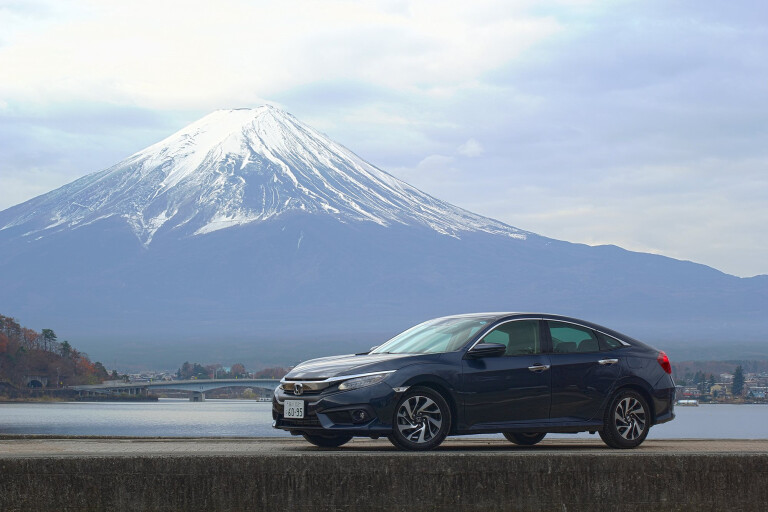
Got a mate who’s been to Japan? Odds are high they’ve already preached extensively on the miracle that is the Japanese rail network, and how it can take you from the packed megalopolis that is Tokyo to the shrine-filled serenity of Kyoto in just a few hours for a reasonable price and virtually zero stress.
And they’re not wrong – Japanese trains are truly impressive, especially for Australians accustomed to sub-par public transport – and for visitors to the country taking the train is a no-brainer. So why would you bother renting a car as a tourist? Believe it or not, you’re missing out on a lot if you steer clear of the good ol’ fashioned horseless carriage during your stay in Japan.

The Place
Japan offers that intriguing mix of the exotic and the familiar, with the country’s ancient history and cyber-punk present somehow coexisting side-by-side without conflict. It’s a land of tremendous contrast, and that dichotomy becomes immediately apparent if you venture outside of its sprawling major cities like Tokyo and Osaka.
This is a simple thing to do as a tourist, thanks to Japan’s virtually flawless public transit system and extensive rail network. Travelling via rail is fast, efficient and affordable, regardless of whether you’re travelling within a city or going from region to region, so it’s little wonder that rates of car ownership in the country are low compared to Australia.
But… what about renting a car? Is a Japanese road trip more fun or more stressful compared to travelling by rail, and, if you decide to do it, what’s the best way to go about it? We travelled to Tokyo to tour the countryside by car, and the short answer is this: if you can afford to do it, it’s something that’s absolutely worth doing, and something that will give you a different perspective on Japan. Read on.

The car
Our vehicle of choice for this roadtrip was a Honda Civic sedan – which is marketed in Japan in a single specification called simply “Honda Civic Sedan”. It’s roughly equivalent to the Aussie-market Civic VTi-L grade, meaning you get nice stuff like climate control, paddle shifters, and active cruise control, except with the 16-inch alloys of the lower-spec VTi-S instead of 17-inch items (they’re a cost option), and the addition of heated front seats (which aren’t available in the Aussie VTi-L).
It’s the cheapest Civic variant in Japan, but comes with plenty of gear as standard – stuff like Honda’s suite of electronic driver-assist technology, active cruise control, the aforementioned heated seats, folding and heated wing mirrors, Honda’s likeable 1.5-litre turbo petrol four, LED headlamps and plenty more. But while the Civic in Australia exists as a biggish small car, out on Japanese roads the Civic sedan feels much, much larger.
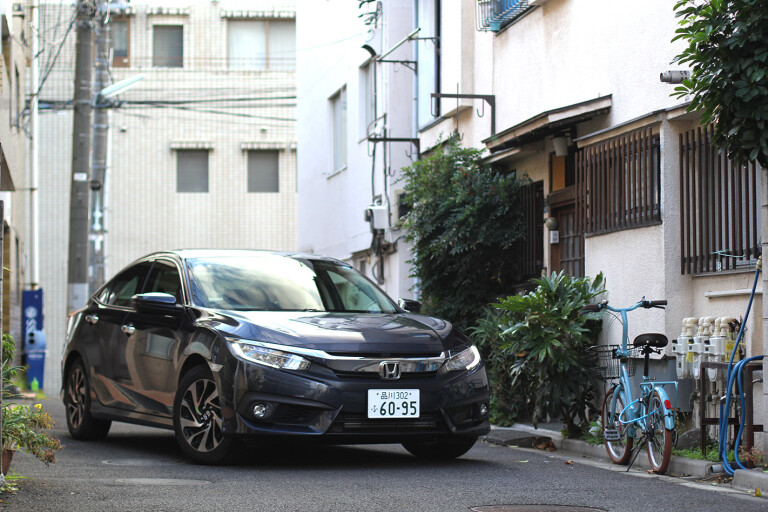
That’s especially apparent in the cramped urban backstreets of Tokyo, where the road can measure barely more than a car's width and unforgiving concrete walls run incredibly close to your wing mirrors. A general rule of thumb when renting a car in Japan is to avoid large cars and people movers wherever possible.
It’s no surprise that city-dwelling locals tend to favour vehicles from the domestic microcar class (or kei class), which are narrow and nimble enough to deal with the cramped confines of a Japanese megacity. But, for travellers, the Civic exists right in the sweet spot.
As a roomy small sedan it’s got plenty of space for four adults, while its 519 litre boot capacity is simply massive. Even with three blokes, three full-size suitcases/duffels and more than a few bags of souvenirs to take home, the Civic never felt like it was wanting for space.
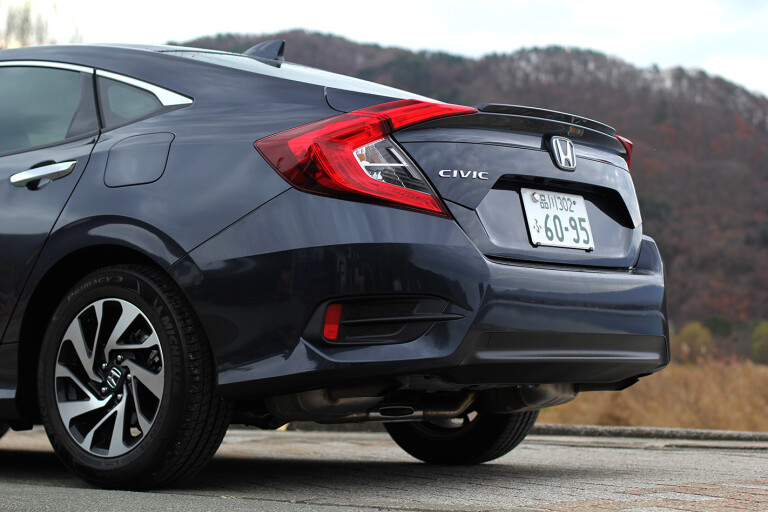
Its massive boot is a key advantage for travellers too – rather than having to lug your luggage with you from train to train, hotel to hotel, the car’s boot essentially serves as a mobile storage locker. Take out what you need, whether it’s an overnight bag or a day pack, and leave the rest. It’s a lot more convenient than using the coin-operated storage lockers at train stations for the same purpose, which is what you’d likely have to resort to if touring by any other method.
The Journey
I’m no stranger to Japan, but previous trips have seen me adhere to the common wisdom of never straying far from the Japanese rail system. It’s a practice that has served well in the past. After all, the rails stretch far and wide, and if you’re willing to walk a kilometre or two from the station there are very few things that are out of your reach as a tourist.
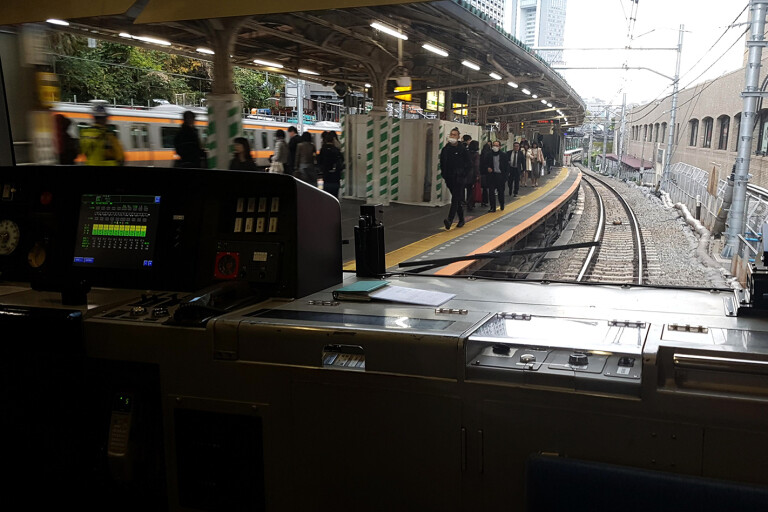
But for this trip, I wanted to try something different: a trip to Japan’s rugged and scenic interior to retrace sections of Japan’s medieval highway between Kyoto and Tokyo – the ancient Nakasendo, or Central Mountain Route.
The route runs east out of Kyoto, Japan’s former capital, before turning north through the Kiso Valley. As the valley gives way to the plains of Nagano prefecture, the Nakasendo ends and the Koshu Kaido begins, taking travellers the rest of the way east to Tokyo. Though regarded as a ‘highway’, the route was a simple path cut through forests and traversed mainly by foot – trains and cars were hundreds of years away when Japan’s first highway networks were established – and the route had been traversed by traders, travellers and others long before the Nakasendo was formally named in the 17th century.
Our journey to the Nakasendo begins from Nihonbashi, a bridge in central Tokyo that’s been used for many centuries as the terminus for Japan’s major inter-city travel routes, and the point from which highway distances are measured from Tokyo – including the Nakasendo. We take a slightly different route though, setting out south to skirt the western edge of Tokyo Bay and head to the port city of Yokohama.
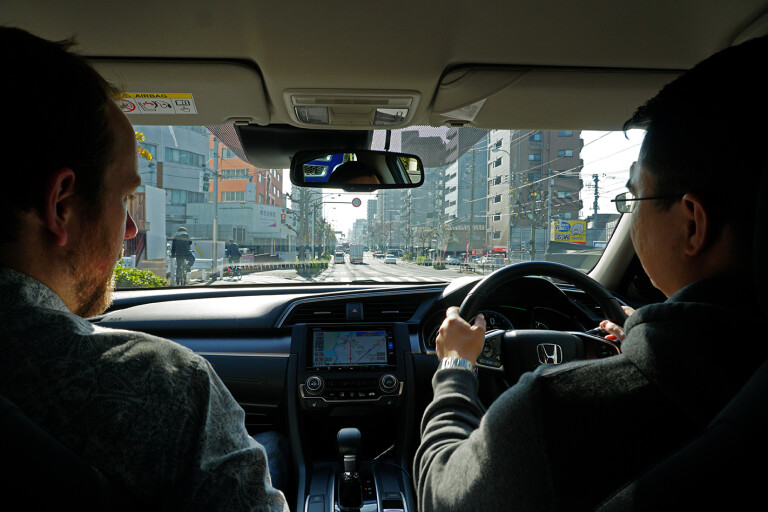
It doesn’t take long for one thing to become quite clear: the further away you get from Tokyo, the less stress you feel behind the wheel. The density of the buildings doesn’t really get any lower until much closer to Yokohama – unsurprising, given Tokyo is the one of the largest and most densely-populated urban areas on earth – but the traffic eases up noticeably after just a few kilometres.
We’re still at ground level for this portion of the trip too, having made a conscious decision to skip the expensive-but-fast toll road known as the Wangan that extends from Tokyo to Yokohama. Though a little slower, you do get to see a different side of Tokyo by bypassing the expressways. It’s not quite as lively as the main activity centres like Shibuya, Shinjuku, Akihabara or Ginza, but it’s areas that are a little further from Tokyo’s main railway loop, the Yamanote Line, where the bulk of Tokyo’s denizens live.
However unless you’re hunting down a specific shop or visiting a friend, there usually isn’t much reason for tourists to stop in these parts of town, and if you do you’ll have the additional challenge of finding a convenient place to park (see below for our tips on parking in Japan).

After a couple of hours driving through Tokyo’s bayside suburbs we arrive in Yokohama for an overnight stop, staying at the historic Hotel New Grand on the city’s picturesque waterfront. Against the hustle and bustle of Tokyo, the more relaxed atmosphere in Yokohama is a welcome change.
Known for industry and shipping, the port city also boasts significant foreign influence thanks to its status as an important trading centre, and you can still see remnants of that in the distinctly western-influenced architecture in its old quarter, located not far from the New Grand – not to mention its sprawling Chinatown district.
It’s a different, more modern taste of Japanese history compared to Tokyo’s myriad temples and the huge Imperial Palace, but our objective is to go even further back. But first, we want to get up close with Japan’s most recognisable natural wonder – Mount Fuji.
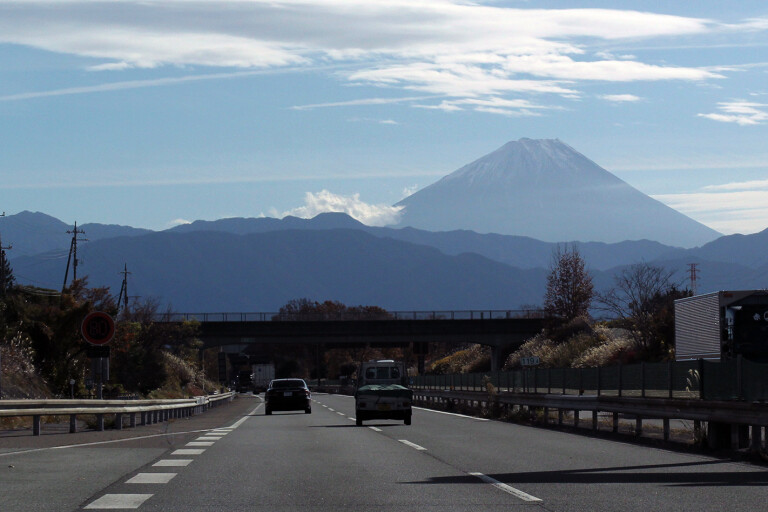
The almost perfectly conical volcano is visible from as far as Tokyo on a clear day, but the closer you get the more awe-inspiring it becomes – hence why we tracked so far south rather than bee-lining west to our objective of the Kiso Valley and the Nakasendo.
After our stopover in Yokohama we turned inland, driving alongside the Tomei Expressway toward Mount Fuji before heading into the Fuji foothills at Oyama.
After spending most of the day at Fuji Speedway to witness the annual Nismo Festival, we drove further into the mountains, crossing over into Fuji’s Five-Lakes district and on to Lake Kawaguchi for another overnight stay.
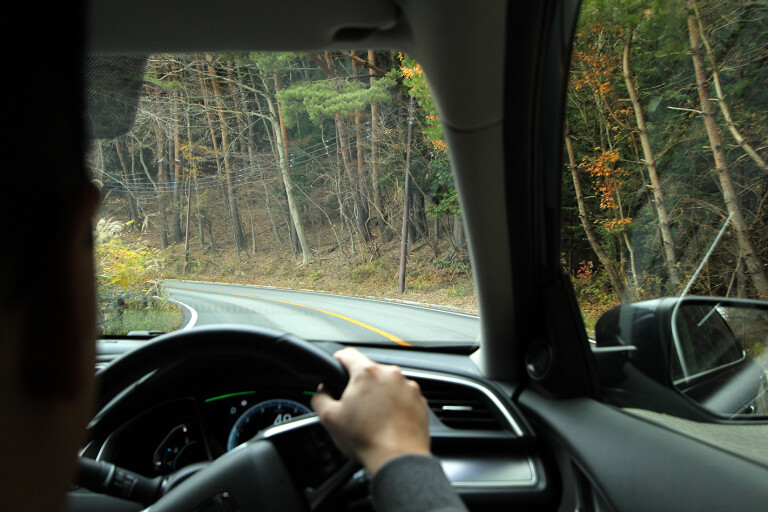
It’s here where the roads become more interesting, winding their way up steep slopes and narrowing significantly. The Civic dealt with it admirably, its turbo engine providing enough grunt to get our gang moving smartly, and its responsive and grippy front-end instilling confidence on these twisty – and in our case quite damp - roads.
By this point in time it was getting dark too, but the rainclouds cleared just long enough for us to get our first fleeting glimpse of Mt Fuji from up close, looming ominously above us in the near-darkness. It’s hard to describe the sheer presence of the mountain in words, but from just 10km away it’s easy to understand how the snowcapped Fuji has inspired generations of Japanese poets and artists. It really is a sight to behold.
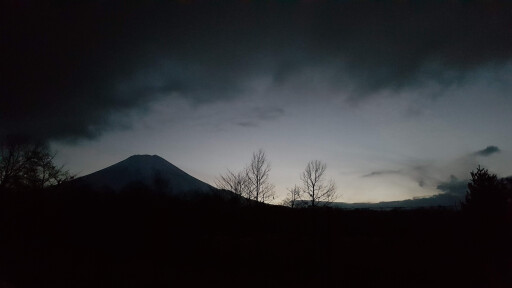
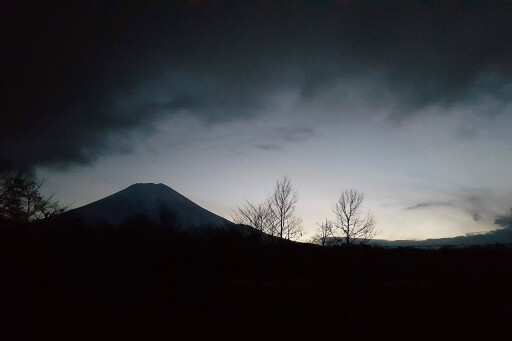
And if you want to get the best views of Japans countryside, it certainly helps to have a car. The flexibility offered by being able to stop at any of the frequent roadside vista points and take a few snaps is hard to beat, and impossible to do if travelling by train. It’s something we certainly appreciated the following morning as we drove along the shores of Lake Kawaguchi and took in the stunning vista of Japan’s iconic peak.
Travelling west from the Fuji Five Lakes area took us further into the mountains. If all you’ve experienced of Japan is the mostly flat coastal plains that big cities like Tokyo and Osaka are built on, then travelling through the virtually vertical hills and valleys that make up the country’s interior regions may take some adjustment.
The roads hug the hills, and tunnels bored right through the heart of the steepest obstacles are the only means of shaving hours off of your trip. The novelty of entering a tunnel in bright daylight and emerging at the other end into dense fog never gets old, but as a driver you do need to stay on your toes. The weather in these parts in winter certainly is … variable.

It sure is nice to be warm and snug inside a car though. Japan can get pretty wet and frosty in December, so being able to sit in a climate-controlled steel box as you travel from A to B is a definite advantage, not to mention the door-to-door convenience of not having to schlep by foot from train platform to accommodation.
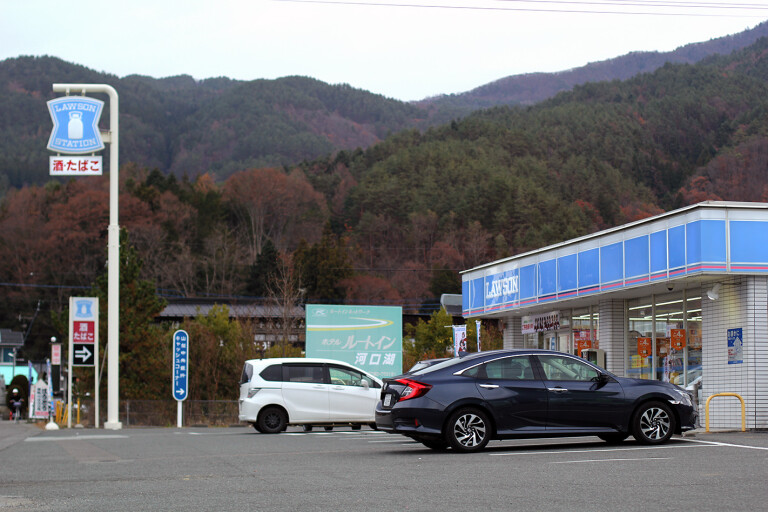
It’s something that becomes even more invaluable in rarely-touristed cities like Kofu, which we passed through on our journey, stopping only to pick up some road trip supplies. In places like these, using a car isn’t just “less inconvenient” than in Tokyo, it’s actually preferable to relying on trains and buses that are often much less frequent than in Japan’s big cities.
But Kofu City is fairly charmless, so we press on westward. Turning south into the Tenryu-kyo valley, we then enter another series of tunnels that penetrate the Kiso Mountain Range to reach our objective: the Kiso Valley.
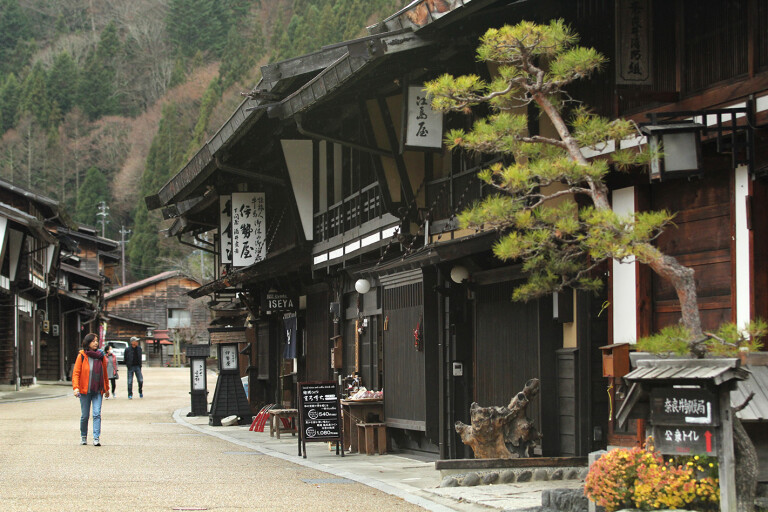
After another overnight stay at a charming Ryokan further down the valley, (a more traditional and much more hospitable option to a conventional hotel) we hit the road once more to reach the place we’ve travelled so far to find, the post town of Narai-juku.
Entering Narai is like travelling back in time to Edo-era Japan, circa 1600AD. Almost exactly halfway between Tokyo and Kyoto, the small township is a protected historic site and a faithfully preserved representation of what a post town - essentially a place to stay overnight for travellers - was like back in the Nakasendo’s heyday. It's not the only well-preserved post town in the Kiso Valley either - a few of the original 69 Nakasendo post towns have survived or been restored to their former glory, with Tsumago-juku at the southern end of the valley being another well-known historic attraction.

We’ve come in the off-season, but there’s more than a few people walking Narai’s length and taking in the township. Come in spring or summer, however, and the main street can be a logjam of domestic and international tourists.
With its main street lined by charming wooden houses, a mixture of residences, stores and eateries, strolling through Narai is a serene change of pace from the urban chaos of Tokyo. It also feels very authentic. Though a historic site, it’s still a functioning village with permanent inhabitants who live, work and raise families there. Sovereign Hill, it ain’t.
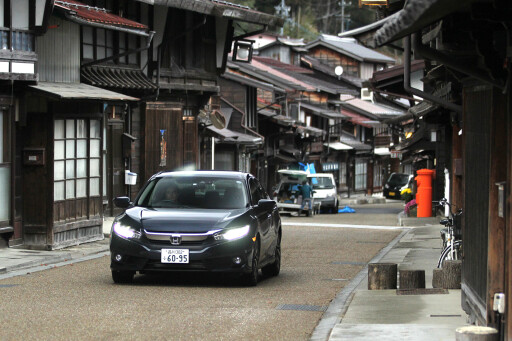 Obviously, there are some differences. The main street is asphalted rather than made of bare earth and flagstones, and a train station provides a fast link to the rest of the valley and beyond. The Nakasendo itself was superseded as a mode of travel long, long ago. You can still walk sections of the original trail, however, which twists to the north and south of Narai-Juku through the dense forests of the valley - at times cobblestoned to give you greater purchase in steep sections, but mostly just a simple walking track through the woods. To think of it as having been a major inter-city thoroughfare in ancient times really shows how technological progress has transformed our lives.
Obviously, there are some differences. The main street is asphalted rather than made of bare earth and flagstones, and a train station provides a fast link to the rest of the valley and beyond. The Nakasendo itself was superseded as a mode of travel long, long ago. You can still walk sections of the original trail, however, which twists to the north and south of Narai-Juku through the dense forests of the valley - at times cobblestoned to give you greater purchase in steep sections, but mostly just a simple walking track through the woods. To think of it as having been a major inter-city thoroughfare in ancient times really shows how technological progress has transformed our lives.
It’s a thought that’s not lost on us as we fast-track our way back to Tokyo the following day, this time hopping on the Chuo expressway toll road to get back to the city pronto to hand ‘our’ Civic back to Honda.
These expressways flow quickly, and even though we have to stop every now and then to pay a toll (see below for tips on dealing with Japanese tollways), we cover a lot of ground efficiently. A trip that would have taken a week by foot back in Edo-era Japan takes us just four hours in the Civic.

Could we have taken the same journey without a car? Absolutely. There’s no denying that Japan’s train and bus systems are the gold standard, and nine times out of 10 you’ll be able to visit any tourist attraction you like without needing to hire a car.
But there’s no way we could have done the trip that we did without one - at least not in the time we had available. The flexibility a car offered us and the ability for us to leave at a time of our choosing and take a route that interested us was absolutely invaluable. You can craft a much tighter itinerary if you tour Japan’s countryside by car, and it also leaves you spending less time waiting in bus stops and train stations – in other words, you spend far more time actually seeing the sights, the very thing you came to do.

And if you’re travelling as a group of three or four people, hiring a car also becomes quite cost-effective. Even if you use a few toll roads during your journey, the ability to spread those costs among multiple people can make a car a better financial proposition than spending a few hundred dollars on train tickets and bus fares.
So if you’re planning on heading off the beaten track in Japan and you’d like to spend some time in its scenic countryside, do yourself a favour and skip the train. Why live your life according to a schedule?

Things you need to know:
- As an Australian tourist, you’ll need an International Driver’s Permit and your Australian driver’s licence on you at all times when behind the wheel. Make sure you pack them both, as car rental companies will need to sight them before handing over the keys. Don’t know how to obtain an IDP? Have a read of our handy guide.
- The majority of Japanese expressways are toll roads, and making heavy use of them will definitely add a lot of expense. If possible, rent a car equipped with an ETC (Electronic Toll Collection) system fitted – it means you can pay for your tolls in one lump sum when you return the car, rather than having to pay as you go in cash. It also means toll points won’t slow your progress.
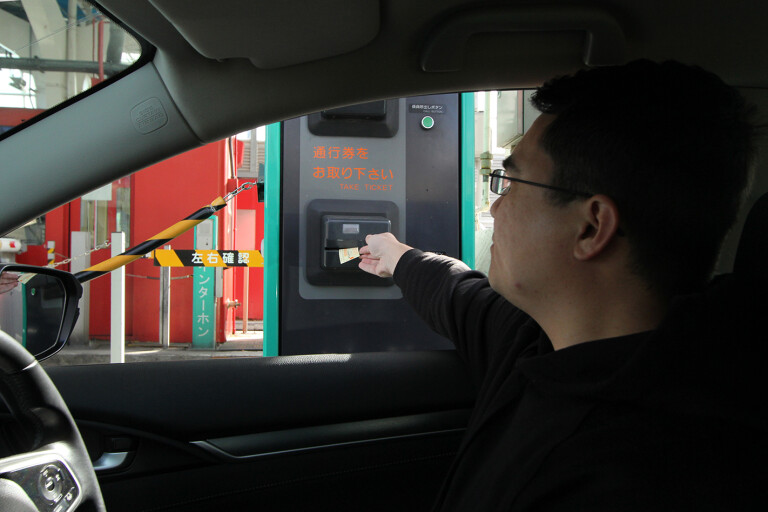
- If you can’t get an ETC card, you’ll need to use a ‘general lane’ at each toll point and pay by cash for each section of expressway that you use – depending on your specific route this could mean multiple payments, as different sections of the national expressway system are managed by different companies. When you enter the expressway you’ll collect a paper ticket from a machine, which you’ll then hand over to an attendant when you eventually exit the toll road. The ticket tells them how far you’ve travelled, and thus how much you’ll need to pay. Keep a good amount of cash with you if you choose this method, as international credit cards are not universally accepted.
- If you choose to pay for tolls by cash, don’t take the lanes marked with just “ETC”! The green ‘general lane’ sign (一般) is what you’re after – if you go into an ETC-only lane, you’ll incur the wrath of other drivers and toll booth attendants, as you’ll instantly become a clog in their otherwise well-oiled system.
- Regional roadside rest areas are more than just a place to pull over and have a kip when you’re tired – they’re a great way of checking out what the region is known for, and the perfect place to pick up some souvenirs of the area. Japan’s regional towns and cities are fiercely proud of their local identity, and if you're looking to take some of that back with you these humble roadside stops provide an excellent opportunity.
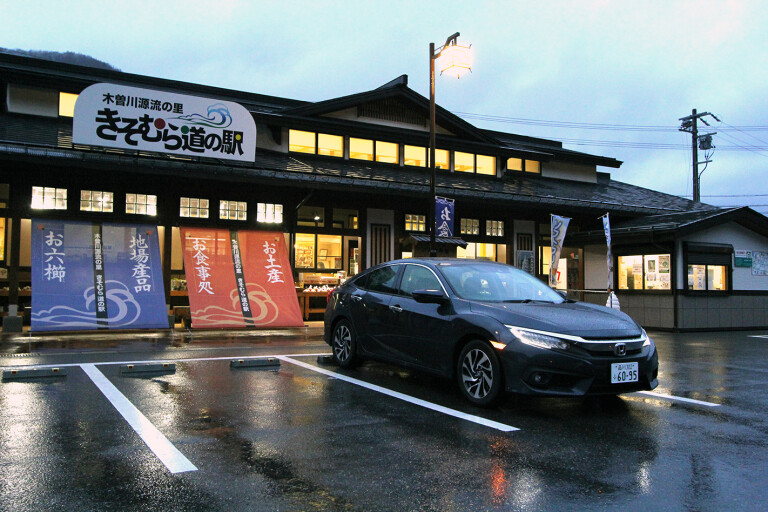
- The Japanese drive on the left hand side of the road, so Australians should feel at home. Be aware of lit intersections though, as complex ones will often have a green light for specific lanes that you’ll need to pay close attention to. You'll need to be on your toes in Tokyo especially, as high traffic density and a non-grid city layout can quickly confuse the unwary.
- Japanese speed limits on highways are quite low, often signposted at 80km/h on what are otherwise autobahn-quality stretches of divided and well-maintained road. Speeding, however, isn’t enforced as rigidly as it is in Australia, and locals will frequently blast past at 100km/h or more.
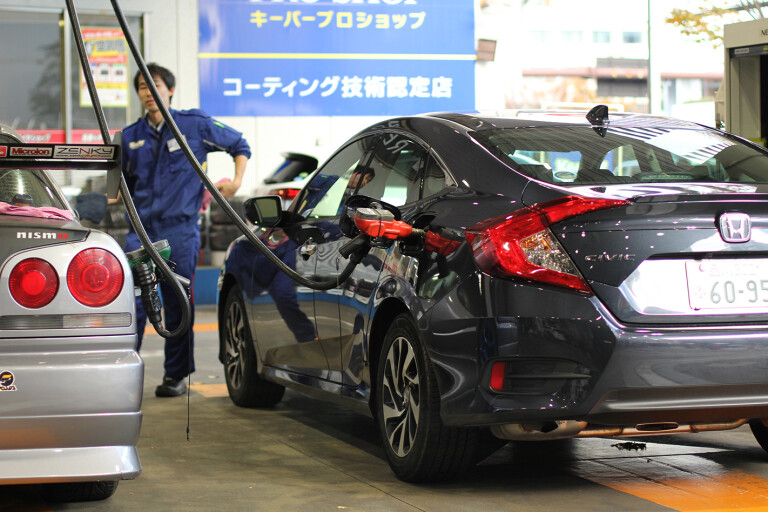
- Petrol stations in Japan are almost universally full-service, something the average Australian hasn't experienced in quite a while. Feel free to stay in your car as the pump attendant takes care of refueling (they'll likely also clean your windshield for you while the fuel flows, a complimentary service) but you'll need some basic Japanese knowledge to tell them what you need. The most useful phrase at a fuel station is "man-tan, ku-da-sai", which translates as "full tank, please".
- Simply put, parking a car is an absolute pain in any heavily-populated part of Japan. On-street parking is extremely difficult to find, so never expect to be able to park right outside whatever it is you want to visit. Instead you’ll need to find a paid carpark, and they take multiple forms. Some are a simple self-serve parking lot with an automatic barrier that traps your car in place once you’ve parked, releasing it only once you’ve paid the (usually steep) parking fee at a nearby machine. Other times you’ll need to use a robotic car stacker (which allow a sizable number of cars to park in an otherwise tiny block of land), or a conventional multi-storey parking lot.
- Parking fees are normally calculated by the half-hour during daytime hours, or even per 15 minutes if it’s a crowded popular area like Shibuya or Shinjuku. If the carpark is part of a shopping centre or on the land occupied by a business of some kind, you may be able to park there for free or at a discount – provided you’re a paying customer and get your ticket validated. Keep PLENTY of cash on you to deal with parking fees, as using foreign credit cards can be a pain or simply impossible.
COMMENTS